In which Rebecca takes a look at the care instructions on the laundry labels of her life.
Dear Reader,
Tiny symbols are everywhere. Spoken and written words are only some of the tools available to language users, and gesture and facial expressions – themselves important cast members in communicative performance – can be represented on paper or on screen by icons and emojis.
Here’s a shrug: 🤷♀️
And a happy face: 🙂
Stylised icons for signage can range from anything from an arrow ➡️ or pointing finger 👉 to indicate direction, to a dog standing in front of a pile of, well, y’know, to encourage people to clear up after their pets. Pictograms such as these are universally comprehensible; there are no language barriers here.

Hmmm. Not true. Not every icon is obvious; for instance, there is plenty to trip us up in the emoji menu.
Aubergine 🍆 apparently doesn’t always mean aubergine.
And a peach 🍑 is not necessarily a peach….
🤫
💡
The article Emoji meanings: make sure you use them right is a useful resource for those like me who are unsure of what messages their emoji choices might be sending out.
I wonder if the yam 🍠 emoji has a hidden meaning? Well, it does for me.
🍠 = I am here, and the kettle’s on!
When I had my workshop, I used to text Jim every morning to let him know that I’d arrived at work. ‘I yam here’, I’d tap out, and this 🍠 would pop up. Before very long I started sending only the emoji, no words, and with Jim’s photography studio so very close by I knew that within a moment, knowing that my first job of the day would be to put the kettle on, my hopeful husband would appear at my door with his coffee cup.
Last month I spotted this really interesting creative exploration of personal iconography on the BBC News website:
‘I embroider my life – it’s not for the faint-hearted'
The 29-year-old featured in the article has now embroidered more than 1,800 one-pence-coin-sized symbols to represent every stage of her life over the past five years.
Sophie’s symbols work absolutely beautifully in concert with each other, but every shape is a work of art in its own right; a graphic distillation of an event or a person. There’s a fried egg, a ladder, a cactus and a snake, but not every element is a pictogram. Her letter sequences WTF, OMG, HUH and OOPS show how paring down elements of language to their symbolic form can convey emotion concisely and precisely.
I’m not a needleworker like Sophie, but years ago I started keeping a tiny log in my notebook to show the activities and feelings I’d experienced each day. I populate the squares with icons and letters of the alphabet to show me at a glance what I’ve been up to.
Here’s a snap of my grid from August 2020. The first Covid lockdown in UK had been lifted in June, and the next wasn’t initiated until September, but the prison bar icon at the top left of 23 out of 31 daily blocks tells me at a glance that I really wasn’t keen to be leaving the house.
Although I chose to stay at home most of the time, not even leaving for walks, the blocks show a level of activity – creative, cultural, academic and athletic – to an extent I haven’t seen in my notebook since.
The square for August 3 shows a ton of things.
Reading from top left to bottom right, here’s what I did that day:
I didn’t leave the house;
I replaced my pen (an occupational hazard for an avid notebooker);
I read for pleasure;
I did a YouTube exercise video;
I got really cross about something;
Something confused me;
I completed a lesson of my online French class;
I did a seated exercise session over Facetime with my mother-in-law;
I washed my hair;
I had a chat on the phone with my friend B;
I translated another chapter of a German book;
I had a glass of wine;
I spent no money;
I worked on an art project.
Icons come and go depending on changes in my priorities. I now use a letter to denote whether I’ve seen one or both of my parents that day, and another to mark when I’ve published a post on Substack. Another recent addition to my pictogram palette is a stylised tent to embellish the square for any day on which I’ve camped in the van overnight. I no longer log no-spend days because my budgeting system is now so ingrained in me that I don’t rely on that kind of record any more. I could lose the cute little book icon, because I know there will be never be another day on which I don’t read for pleasure, but no, that one’s a keeper because it’s my favourite to draw.
There are plenty of other things which I could track but choose not to. Writing for pleasure certainly deserves its own icon, but I don’t want to be a slave to my practice, so that doesn’t get a look-in on my squares. And hah, that’s fine.
👕 It’s on the label!
Every factory-produced item of clothing has a care label, and some of these washing symbols need no decoding. A hand in a container of water shows that the item requires handwashing; a container of water with a cross through it means that the article should not be washed at all.
So far, so obvious – but others symbols are less so. Take bleach, for instance.

According to the internationally-recognised pictograms first devised in 1963 by GINETEX, the France-based European association for textile care labelling, a triangle △ is the best fit for the gloopy whitener.
It’s baffling.
But the point of a symbol is to symbolise something; not to show its literal shape. And of course, symbols to represent abstract things – such as to denote the ability of a triangle liquid to strip colour from cloth, or a temperature recommendation – are not likely to resemble anything concrete.
It can be a problem for some that many symbols on maps are visually so distant from the entity they portray that it’s impossible to decipher them without the key.
Exploring a public footpath I hadn’t been on before I’d once found myself in the middle of a field with no clue quite where to find the gate out of it. The field stretched across several acres and the route of the path ahead wasn’t clear. There weren’t even any landmarks.
Hang on, yes there was one; ahead of me was an electricity pylon. No landmark is helpful, though, when one doesn’t have the skills to relate them to the landscape.
It’s no news to regular readers of ‘Dear Reader, I’m lost’ that I’m a card-carrying disorient, unable to find my way home unless I can pretty much see my house. And I really don’t understand maps. Nevertheless, it was time to turn to the one I was carrying.
After a while I’d established which field I was in, and yes, the angle of where the two boundaries I had in eyeshot actually met backed up my assumption. That was a start.
I pored over the printed field, and then looked up. Ah yes, the pylon. ‘WHY DON’T THEY PUT PYLONS ON MAPS?’ screamed the lost soul inside my head.
Reader, they do. Cartographers provide us not only with the symbols we can use to identify the geographical features of a location but also the means to decode them.
😅 #phew
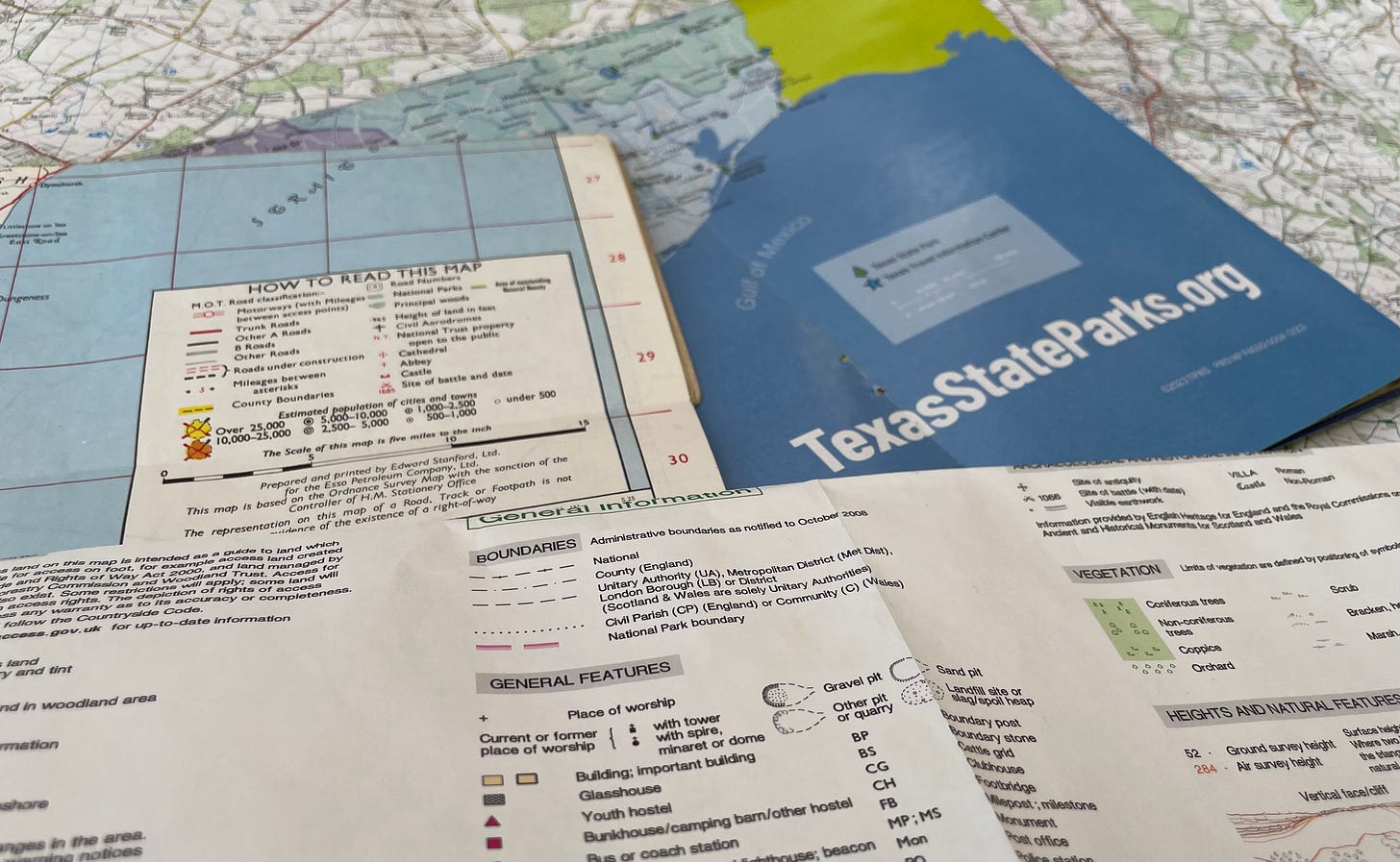
On a dotted line stretching right across the centre of the piece of papery land I’d identified as the field I was lost in was a teeny, tiny square.
I looked at the legend printed across the bottom of the map. That was the pylon. And to get to the gate shown on the field boundary I would need to pass it on my right-hand side.
To not only my own surprise I made it home without incident that day, wondering the whole way back why an electricity pylon on a map looks nothing like an actual electricity pylon in real life.
I reckon Ordnance Survey need to speak to those folks at GINETEX about adopting their ‘Do not bleach’ symbol.
Love,
Rebecca x
❤️ Some love, and an apology ❤️
❤️ I love to read and write on Substack, and due to various pressures I have been doing less of both over recent weeks. I’m finding it a little hard to keep up at the moment, particularly with reading the gorgeous work of others and engaging with them in their comments. I’m also very behind on responding to comments on my own posts. If you’ve noticed this, I’m sorry. It’s not a reflection on you. 😘
❤️ Thank you so much for bearing with me. I’m still here: I’m reading, writing and enjoying, but less, and less visibly, than I had been.
❤️ Dear Reader, I love you. Happy Valentine’s Day for yesterday. Thank you for being here.
As regular readers of ‘Dear Reader, I’m Lost' will know, I already have an ongoing writing relationship with Terry in the form of regular, light-hearted correspondence on Wednesdays. It’s his turn to reply to me next week.
If you’ve enjoyed this post, please let me know by clicking the heart. Thank you.
And thank you for reading! If you enjoy ‘Dear Reader, I’m lost’, please share and subscribe for free.

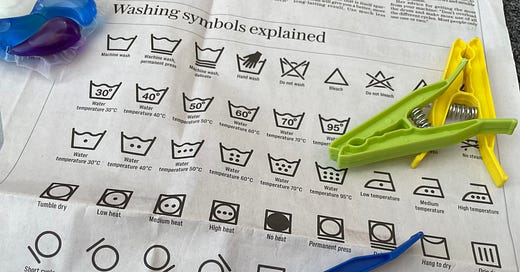




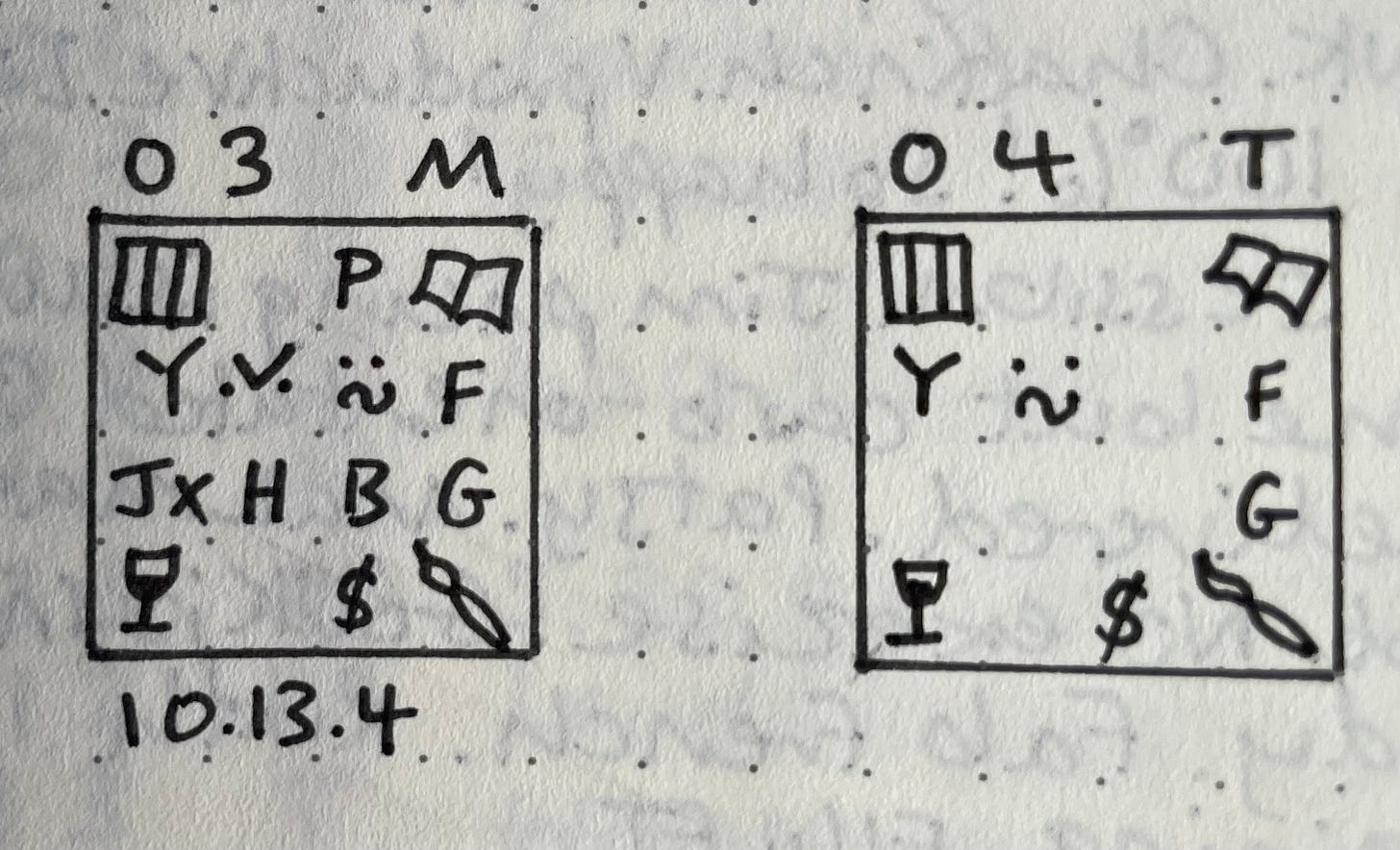

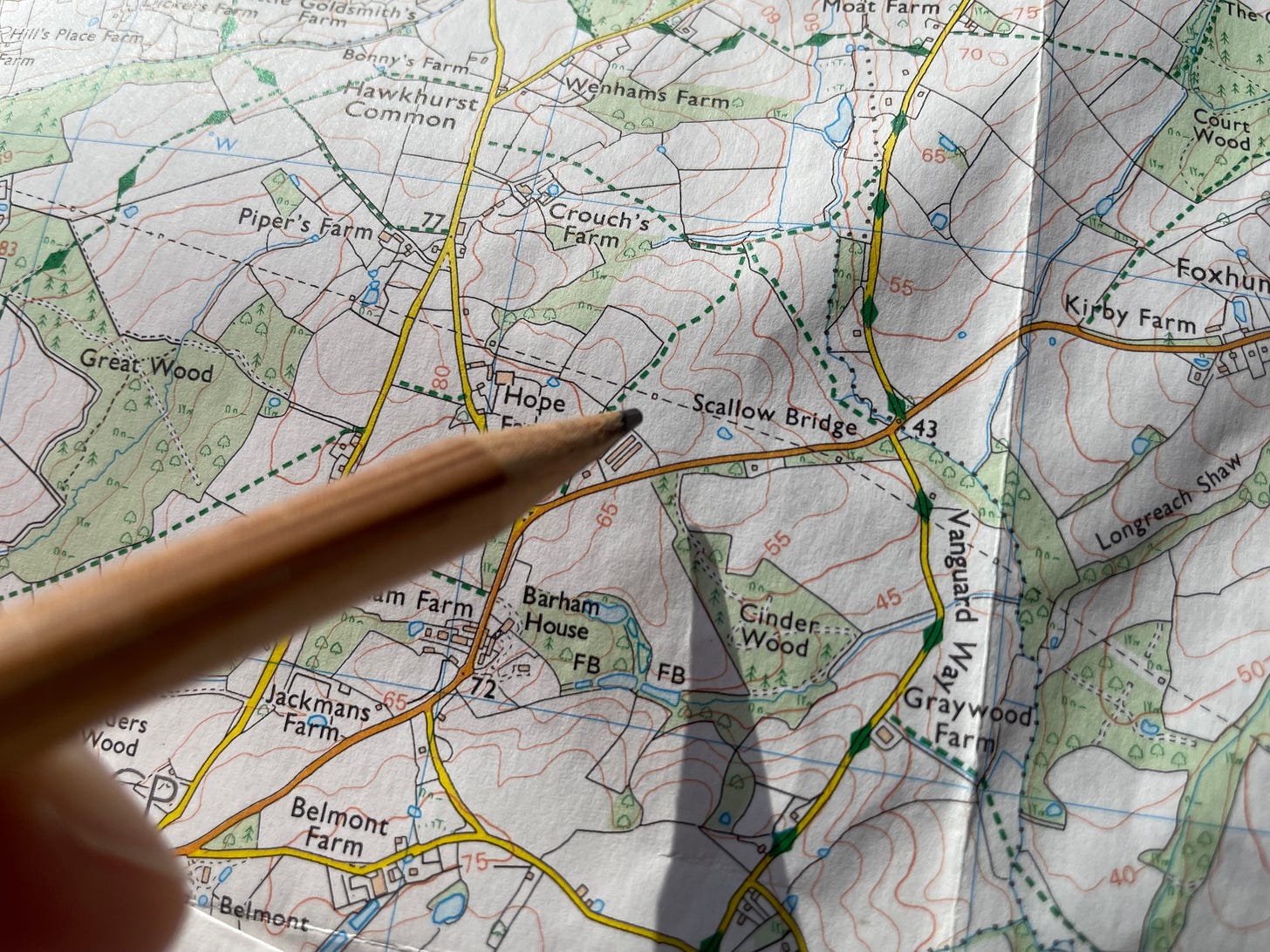
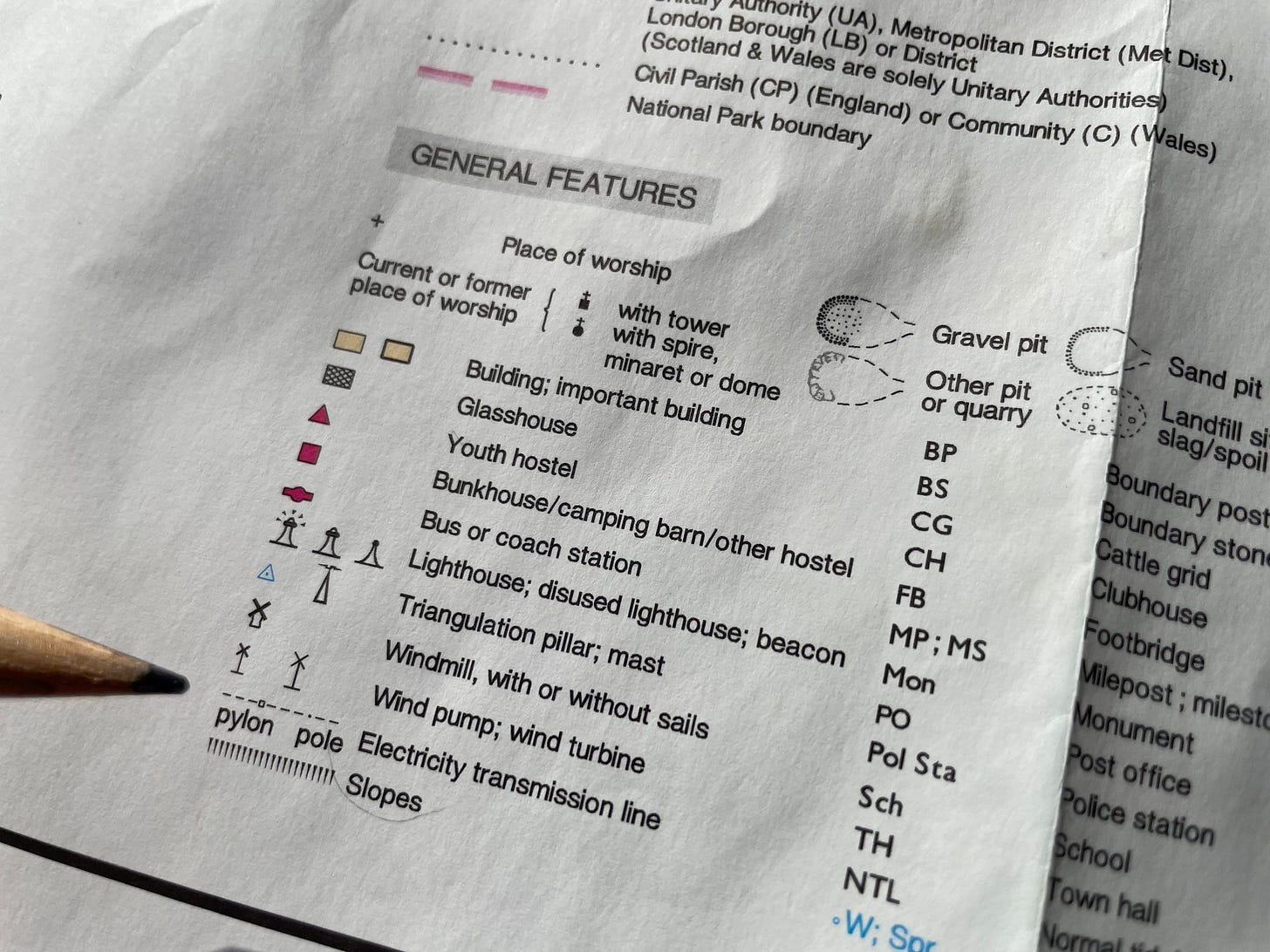

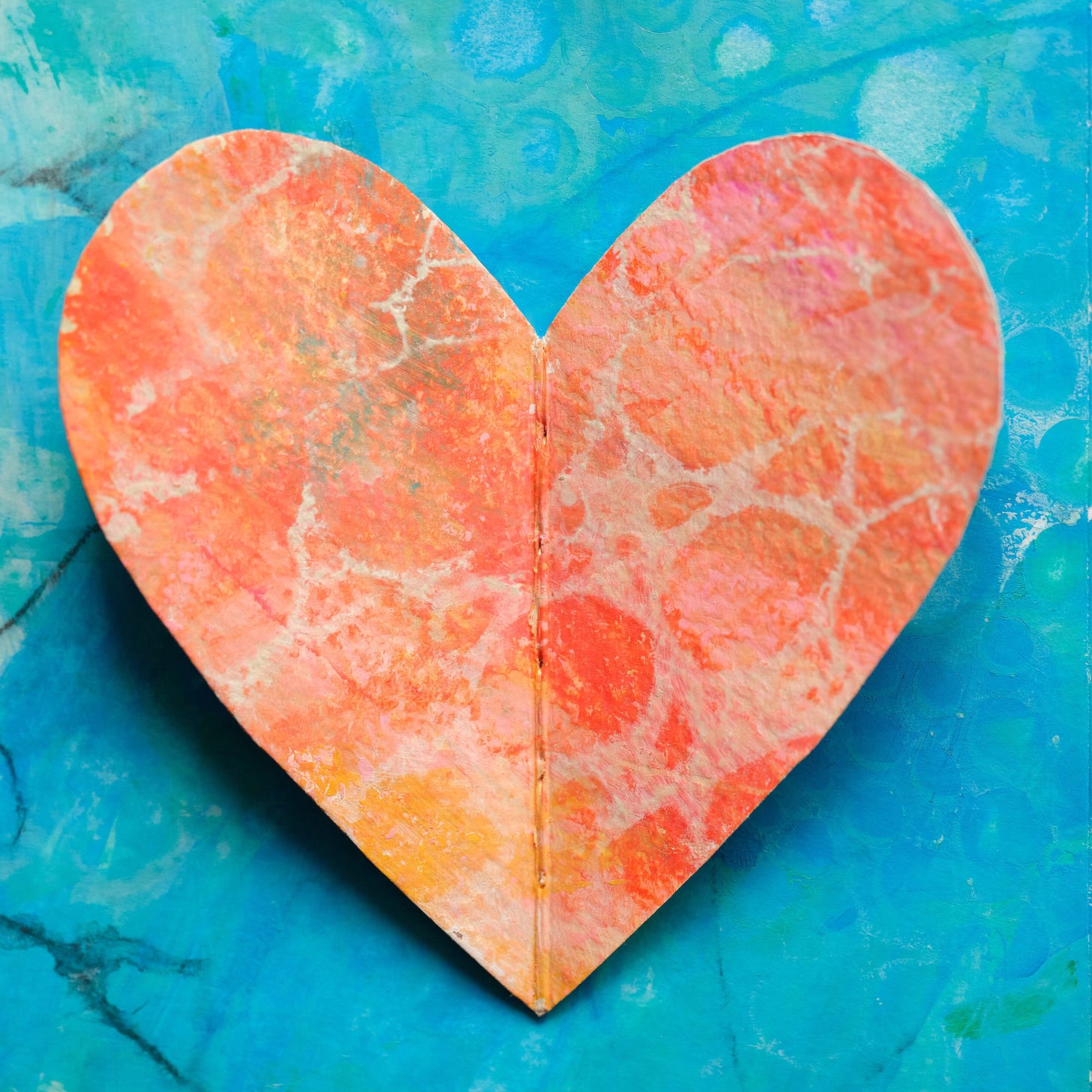
Your secret activity squares are an absolute delight - how Egyptian of you, lol!
Loving the whimsy here and as a fellow no-sense-of-directioner I am well impressed that you were able to identify a pylon on a map - or anywhere. Applause!
I hope you are feeling alright too, it's a LOT sometimes to keep up with all of one's fellow Substackers and can be overwhelming especially if not feeling 100% - and especially in our current, completely insane world. Thinking of you with many hugs, Rebecca xo
Thanks so much for the emoji link. Thinking about it now, who knows what I have actually been saying with symbols!? I better study the language before actually applying it.... I might be embarrassing myself and not even know it. I hope you will not begin to feel that writing for / reading Substack is burdensome, my friend. That would take all the fun away. Whenever you write for us, we are delighted. We will read Rebecca Holden any day, any time and are not counting days. No rules apply to joy.